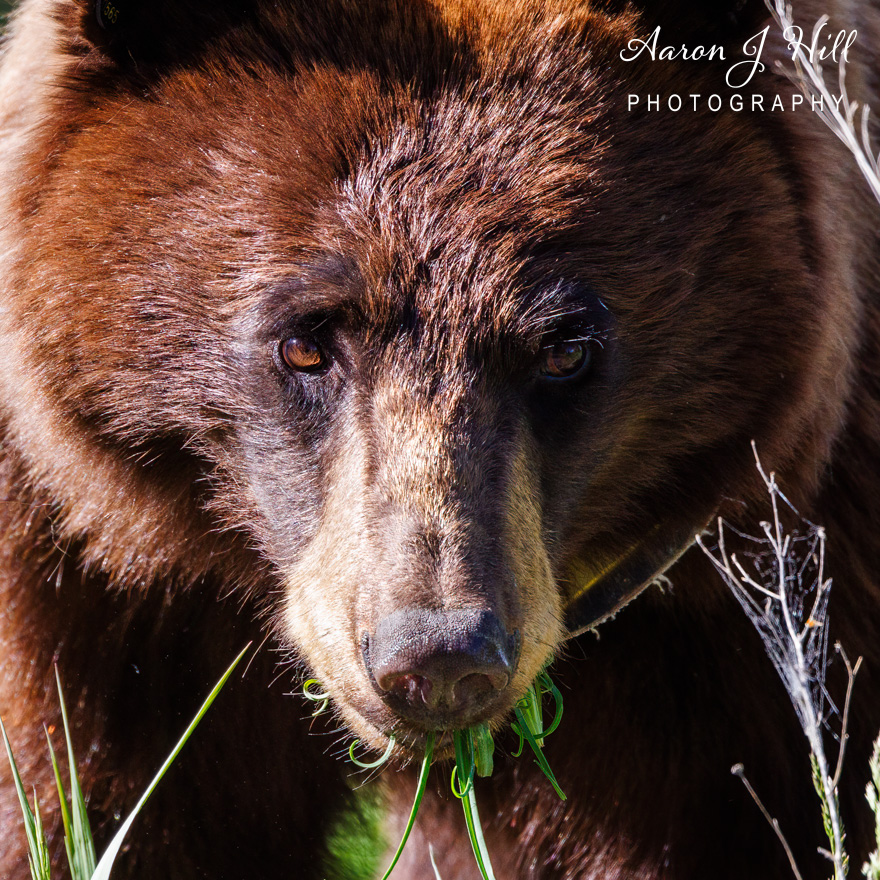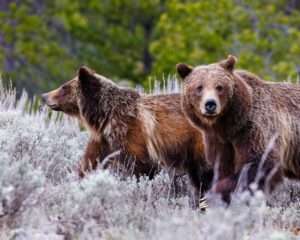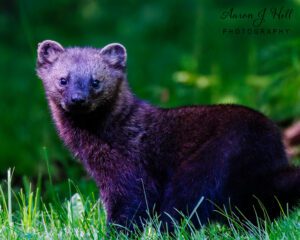The Art of Wildlife Photography: Capturing a Cinnamon Black Bear in Yellowstone National Park
Yellowstone National Park is a world-renowned destination for wildlife photography, boasting an incredible diversity of species and breathtaking landscapes. Among its most iconic inhabitants is the American black bear—and in rare cases, like this one, a cinnamon-colored black bear. Capturing such a majestic and elusive creature requires patience, preparation, and a deep respect for the wild.
In this blog post, I’ll share the story of photographing this stunning cinnamon-colored black bear, along with tips for wildlife photography in Yellowstone, recommended gear, and techniques to help you succeed in your own photographic adventures. Whether you’re an experienced photographer or a nature enthusiast looking to improve your skills, this guide is designed to inspire and inform.
Yellowstone National Park is a Wildlife Photographer’s Dream
With over 2.2 million acres of protected wilderness, Yellowstone National Park is a sanctuary for iconic species such as bison, wolves, elk, and bears. The park’s unique ecosystems—ranging from geothermal basins to lush meadows—provide a rich tapestry of habitats for wildlife.
Among the park’s residents, the black bear (Ursus americanus) is a favorite subject for wildlife photographers. Though commonly referred to as “black” bears, their coats can range from jet black to shades of cinnamon, brown, or even blond. This variation adds an element of surprise for photographers and makes sightings of cinnamon-colored black bears particularly special.
The Story Behind the Shot: Finding the Cinnamon Black Bear
It was a crisp morning in Yellowstone, with the sun just beginning to light up the rolling meadows and towering pine forests. Early morning and late evening are prime times for wildlife activity in the park, as many animals are most active during these hours.
Location Matters
I had been exploring the Lamar Valley, often called the “Serengeti of North America,” known for its abundance of wildlife. This region of Yellowstone offers photographers unparalleled opportunities to observe animals in their natural habitats. It was here, amid the tall grasses and scattered wildflowers, that I spotted the cinnamon bear grazing on vegetation.
Behavioral Observations
This bear was foraging in an open meadow, a behavior typical of black bears during the summer months. Bears spend a significant portion of their day searching for food, which in Yellowstone includes grasses, berries, insects, and the occasional small mammal. Watching the bear move slowly and deliberately, I knew I had a rare opportunity to capture its essence up close.
Gear and Settings: Tools of the Trade
Photographing wildlife, especially a powerful predator like a bear, requires specialized gear and careful settings. Here’s what I used:
- Camera Body: Canon EOS R5
The high resolution and fast autofocus of this camera made it ideal for capturing the fine details of the bear’s fur and the intensity of its gaze. - Lens: 100-500mm telephoto zoom lens
This lens allowed me to maintain a safe distance while filling the frame with the bear’s striking features. - Settings:
- Shutter Speed: 1/1000 sec to freeze any movement.
- Aperture: f/5.6 to f/7.1 for a shallow depth of field, isolating the bear from the background.
- ISO: 800 to ensure proper exposure in the dappled light of the forest.
- Mode: Continuous autofocus (AI Servo/AF-C) and burst mode were essential for tracking the bear’s movements.
Safety First: Ethical Wildlife Photography
When photographing wildlife, especially in Yellowstone National Park, respecting the animals and their habitat is paramount. Here are a few important safety and ethical considerations:
- Maintain a Safe Distance: Park regulations require staying at least 100 yards away from bears. I used my telephoto lens to capture close-up details without compromising safety.
- Stay Alert: Bears are unpredictable. Always be aware of your surroundings and have a clear escape route.
- Don’t Disrupt Wildlife: Avoid making noises or sudden movements that could startle the animal.
- Travel with a Group: Being with others reduces risks and enhances safety in bear country.
The Shot: Capturing the Perfect Moment
What made this photograph truly special was the bear’s direct gaze into the lens. It was as if the bear paused for a moment to acknowledge my presence, creating a sense of connection that makes wildlife photography so rewarding.
To achieve this shot, I relied on the following techniques:
- Framing: I positioned the bear slightly off-center, following the rule of thirds, to create a dynamic composition.
- Lighting: The dappled sunlight filtering through the trees highlighted the bear’s cinnamon fur, enhancing its texture and warmth.
- Focus: I locked focus on the bear’s eyes, ensuring they were sharp and compelling—the focal point of the image.
Tips for Photographing Bears in Yellowstone
If you’re planning your own trip to Yellowstone National Park, here are some tips to help you succeed in photographing bears and other wildlife:
- Scout Locations: Popular bear-viewing areas include the Lamar Valley, Hayden Valley, and the edges of Yellowstone Lake.
- Go Early or Late: Wildlife is most active during dawn and dusk. Arrive early to increase your chances of sightings.
- Use a Telephoto Lens: A lens with a focal length of at least 400mm is essential for photographing bears from a safe distance.
- Be Patient: Wildlife photography requires time and perseverance. Stay in one location and observe quietly.
- Shoot in RAW: This allows for greater flexibility in post-processing, especially in adjusting shadows and highlights.
Why Cinnamon-Colored Black Bears Are Unique
The cinnamon coloration in black bears is a genetic variation often found in western populations, including Yellowstone. This color phase is thought to provide better camouflage in open, sunlit environments, helping bears blend into their surroundings. Photographing such a rare variation is a privilege and a testament to Yellowstone’s rich biodiversity.
Post-Processing: Bringing the Image to Life
After capturing the photograph, I used Adobe Lightroom for subtle adjustments:
- Exposure and Contrast: Enhanced the dynamic range to bring out details in the bear’s fur and the surrounding vegetation.
- Color Correction: Balanced the warm tones of the bear’s coat with the cool greens of the meadow.
- Sharpening: Applied selective sharpening to the bear’s eyes to make them stand out.
The Importance of Conservation
As you photograph wildlife in Yellowstone, remember the critical role that national parks play in conserving these species. The black bear population in Yellowstone is stable, but it faces threats from habitat loss, climate change, and human interference. By respecting park rules and practicing ethical photography, we contribute to the preservation of these incredible creatures for future generations.
Final Thoughts: A Moment of Connection
Photographing this cinnamon-colored black bear in Yellowstone National Park was an unforgettable experience. It reminded me of the power and beauty of the natural world and the responsibility we have to protect it. Through wildlife photography, we not only capture moments but also tell stories that inspire others to appreciate and conserve the wild.
If you’re planning your next adventure, make Yellowstone a priority. With its rich ecosystems and abundant wildlife, it’s a dream destination for photographers and nature lovers alike.
So grab your camera, head into the wild, and let Yellowstone’s wonders unfold before your lens.



